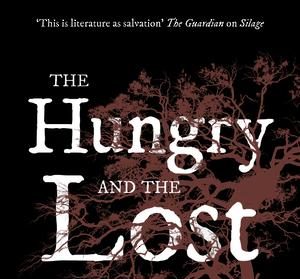Zoe Kramer reviews The Hungry and the Lost by Bethany W. Pope, a novel set in Edwardian Florida tracing a rich Gothic tradition of myth and storytelling. Here, Kramer asks of its place within the Gothic genre and the moral dilemma presented by the employment of outdated tropes and ideas.
On a humid night, the minister spatters the wallpaper with coughed up blood and is no more. His angelic wife Rose succumbs to madness, and their ten-year old daughter Joy is left to fend for herself in their crumbling manse.
Set in Edwardian Florida, The Hungry and the Lost by Bethany W. Pope ticks all the boxes of a Gothic novel. The line between the real and the ethereal is as blurred and distant as the thin red Tampa sunset. Pope’s language is rich and tactile, capturing the decay of the manse and the surrounding town with unsettling detail. Death surrounds our protagonist, the untethered corpses pushed upwards and into the light by the swamp.
Pope’s skilful and intricate evocation of place draws the reader into Joy’s world and entices them, like a beckoning finger, despite the many horrors looming in the wings. Time passes feverishly, as we catch glimpses of Joy at twelve and then at twenty, eating rats to survive and nourishing her mind with the Aeneid and the Odyssey. It is difficult not to mourn the life she might have had, but unlike Rose who has become detached from reality, the reader must confront the hard truth of Joy’s dismal situation. One which sees the death of her only companion, her dog Bess, and the successive arrival of the nouveau riche Johnsons who will stop at nothing to raid the treasures of the manse.
A commitment to embodying an authentic Edwardian mindset unsurprisingly leaves the novel, at least in some respects, dated and two-dimensional. Like the villains of classic Gothic texts, the Johnson family – particularly the elder and younger Randy – are unambiguous in their evil dispositions, desiring no more than to satiate their lust for women and material gain. The animal nature of this father-and-son dynamic solidifies the theme of humanity and base instinct, both in what separates them and in what binds them together. While the extremity of this contrast serves to heighten the conflict, it can also flatten it. Surely there would be more significance to their evil deeds if they were done in spite of a faint glimmer of conscience threatening to topple their callous exteriors. Instead, the reader is led to feel a distaste not dissimilar to what one might hold for a cartoon villain – rather than the deeper relationship a reader can experience with that of an unpredictable, yet fully realised character.
Rose’s mental illness is also portrayed from a Gothic Edwardian standpoint, and so without the nuance and empathy more typical of our modern times. Described as ‘madness’, her symptoms involve a dissociation from reality wherein she lives a life prior to the death of her husband, and is unable to register the decay of the manse nor the dire situation in which her daughter finds herself. Like the governess in Henry James’ The Turn of the Screw, her signified purity and mental condition are inextricably linked. Pope employs the dated trope of female “hysteria” without actually deconstructing it, (at least not beyond a few offhand references to the threat of future institutionalisation). True to the genre, this affliction is understood through spiritual rather than scientific means, and ultimately Rose’s condition is lifted as easily as a witch’s curse when the Johnsons lay siege on the town. Her sudden return to lucidity reads as a plot-furthering device more than anything else, and ultimately detracts from the severity of her prior suffering.
Still, Pope does demonstrate an ability to shine a contemporary perspective in her handling of other topics. The book deals with the historical legacy of this time period in the Deep South with moral tact, acknowledging the bona fide slavery even after abolition and the mistreatment of black, Native American and Hispanic workers. Despite being a subliminal character, Malda – the family’s black housekeeper who was employed prior to Joy’s father’s death – is rendered authentically as a fully realised individual marked by personal desires, experiences and outlooks. With this same deftness and attention to detail applied elsewhere in The Hungry and the Lost, it may have offered a more interesting take on this classic genre.
The Hungry and the Lost stands on its own not only within its genre but simply as a work of fiction. There is never an idle moment, the tension ricocheting from page to page as the reader becomes entangled in the ghost town, as trapped and vulnerable as Joy. It has a mesmerising mythic quality, unburdened with the sometimes tiresome desire for gritty reality which so many novels fall prey to. While there is little levity to be found, the catharsis is significant and the payoff undeniable.
The Hungry and the Lost is available via Parthian Books.











